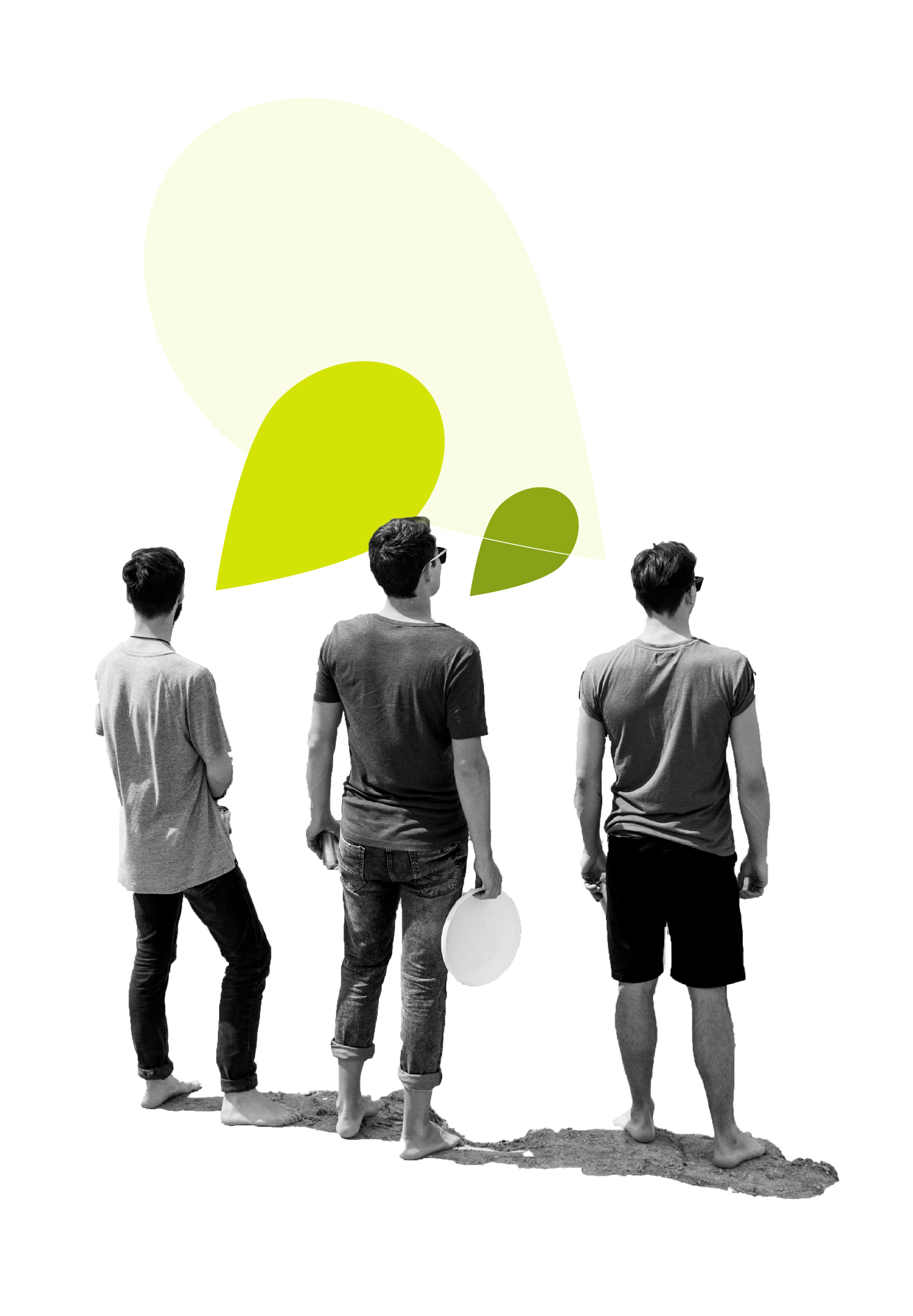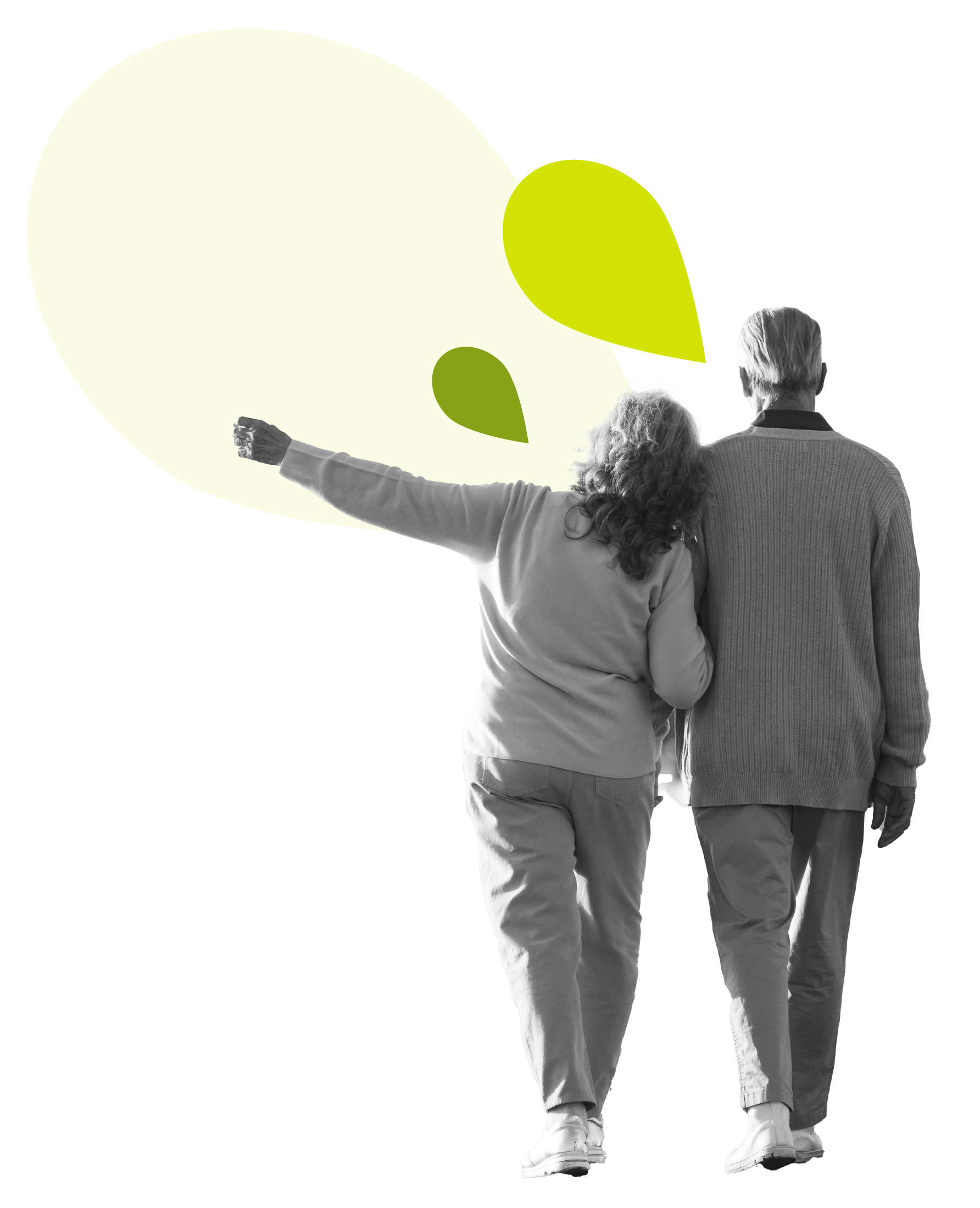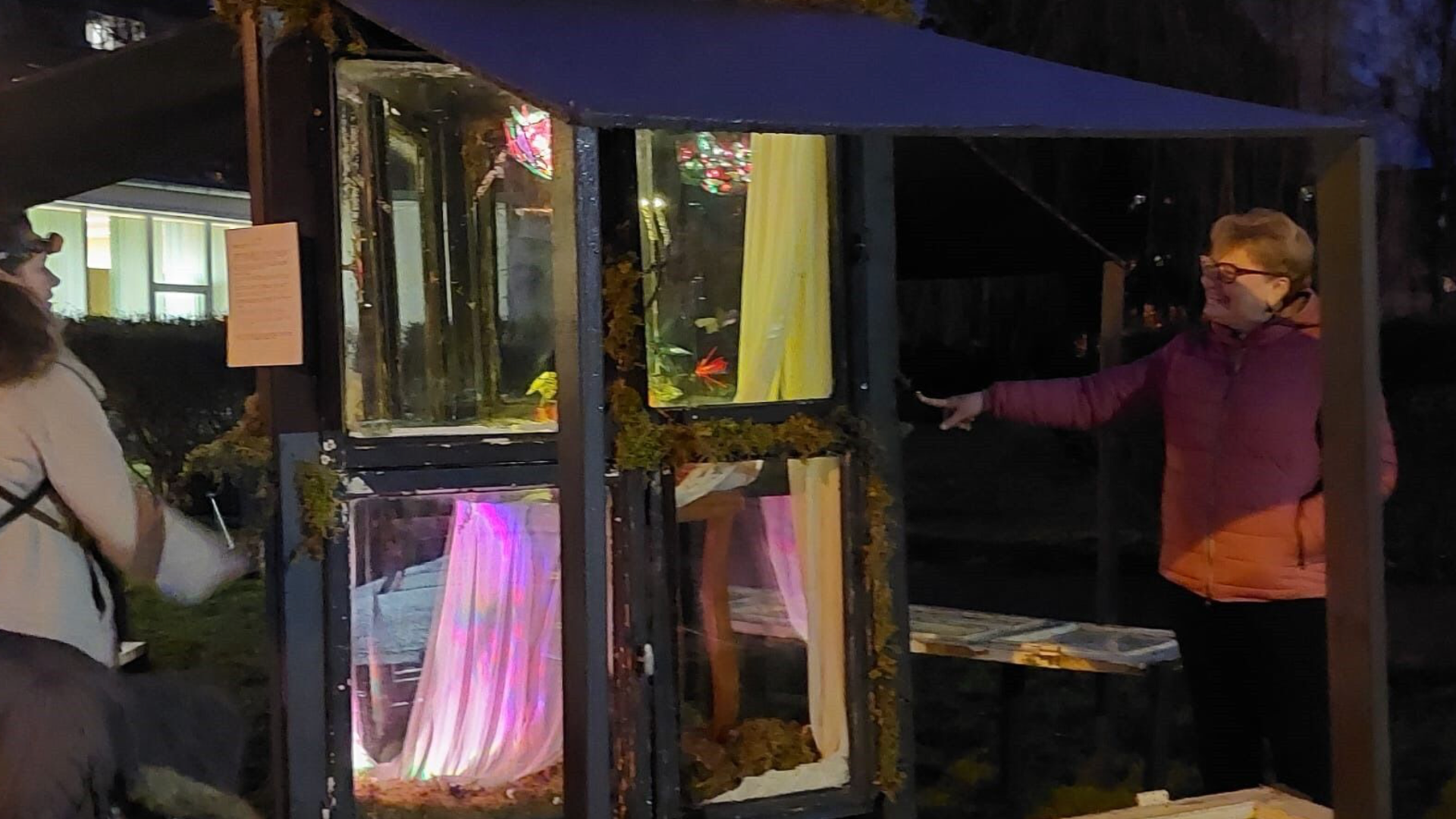Please note: Parts of this website will be included in the forthcoming CCI4Change publication, to be released by Xamk in December 2025. Therefore, if you wish to cite this material, please contact cai.weaver[at]xamk.fi. Thank you!
Case Study Latvia
Collaboration
Collaboration was at the heart of the CCI4Change pilot that unfolded in Jūrmala, Latvia.
The pilot process consisted of three main stages. First, a collaboration was established between the two organizations in the core team: The Jūrmala Municipality and NDPC. It was important to get everyone on the same page by discussing what both organizations wanted to achieve and how responsibilities could be best distributed.
We created a communication framework that enabled effective collaboration both internally and between the different organizations. This required different departments within the Jūrmala Municipality to communicate — not just the culture and development departments, but also those working with energy and social issues.
Secondly, by winning the project’s local open call for creatives, Fonds INITIUM was brought into the mix, working directly with Kauguri residents. As the Jūrmala Municipality and NDPC transitioned into support-oriented roles, the artistic organization took the lead in efforts to engage people using creative methods.
The piloting work in Jūrmala was not merely about awarding grants in a transactional manner; it involved establishing a genuine collaborative dynamic between the municipality, the creatives, and the citizens. One key takeaway from this experience was the value that existing relationships with local creatives bring — these relationships matter as, in the end, it is the sense of trust between collaborators that makes all the difference.
It wasn't always easy. Ensuring everyone was on the same page, especially across different municipal departments, was a challenge. But looking back, experiences in the field were intense and resulted in valuable lessons for anyone looking to try something similar!
“Solving the toughest sustainability challenges requires creative skills and brave approaches. We need to support local authorities to drive innovative partnerships with their artists and creatives, which bring real engagement and meaning to their communities. CCI4Change provides a framework and a set of tools to get started.”
- Krista Petäjäjärvi, Expert in Arts-Based Innovations at Northern Dimension Partnership on Culture, Project manager of the CCI4Change

Pilot Case
In this site-specific work by Fonds INITIUM, residents of the Kauguri neighbourhood were invited to engage in a dialogue about their community, exploring local mindsets around energy consumption.
The Fonds INITIUM is a professional arts and culture platform focused on community art projects. It employs theatre and other artistic methods in initiatives supporting social, educational, and cultural efforts in Latvia and the Baltic region. In Kauguri — a site-specific location for the artistic activity — the team engaged with approximately 170 inhabitants through both brief interactions and in-depth interviews. The overarching premise was that engaging the community as a whole — its history, challenges, and everyday realities — would be fundamental to addressing issues around energy consumption.
The creative work culminated in an installation in the public sphere, reflecting on INITIUM insights and dialogues with the locals. The art installation stood in a central place outside the library for five weeks, where locals could engage with it directly. The idea was to combine themes of electricity and community: To light up the installation, three people had to be pressing its buttons in unison.
Usually, the municipality reaches people through the cultural centre, the library, and the youth centre. However, we knew that residents in Kauguri can be hard to engage and there aren't many active community groups. We hoped to change that. Local communities in Kauguri aren't as strong as we'd like, so people don't always believe they can make a difference. With this pilot, we wanted to develop the agency of the citizens. Even though it wasn't the only goal, we hoped to show that community involvement matters.
For the CCI4Change project, the involvement of residents was extremely important, and it happened in stages. INITIUM held meetings at the library, conducted tours with the local young people, and mapped social data at the Kauguri market with residents. INITIUM collaborated with the community and used regular interventions to understand what type of community Kauguri is. It was about encouraging participation and making people feel like their voices mattered. INITIUM plans were adapted based on the community's evolving knowledge rather than being executed as initially decided. The creative process reflected the community, relying on its feedback to shape the development.
In Jūrmala, we had some concerns. We wondered how the people of Kauguri would react: Would they understand the artistic work and goals of the project? Would they think it was a waste of money? Would they understand what the artists were trying to say? Along the way, we realized that what we really wanted was for this project to build trust. Trust between us, the diverse municipality employees, and the people of Kauguri. We figured that without trust, it's hard to make real change or progress. From the experience of INITIUM’s work in Kauguri, we learnt how much can be done to nurture exchange and dialogue with the community, to understand its mindset and how issues around energy consumption relate to the people. Art can create a new understanding of a community: What it values and what lies behind local attitudes. It can build agency within the community. Art can provide inspiration and serve as a catalyst to provoke action and change. However, when working in this manner, it is essential to devote enough time to build this dialogue and pay attention to how this new understanding of the community can serve a purpose. How can we move forward with the understanding this process provides?
INITIUM met with locals on January 16th, 2025, after the "Neighbour's House" installation had been running for a month. We wanted to hear what their impressions of the installation were. Interestingly, one of the locals pointed out that the fact that the installation was still there, untouched, proved important. It demonstrated that Kauguri isn't as unsafe as its reputation suggests. The installation was working, people were noticing it, and it wasn't being vandalized.
In a neighbourhood where the engagement and agency of citizens are rather low, the stories of the people who live there can easily be overlooked. Latvia still has much to learn when it comes to engaging people through culture — especially in addressing complex sustainability and social issues in communities through artistic means. INITIUM’s installation gave people a chance to speak up and share their own perspectives. It made people question their preconceived ideas about Kauguri.
The pilot process in Kauguri demonstrated that in order to understand how communities can change their attitudes and behaviours around energy consumption, we must understand the community itself — understanding the social fabric that relates to this change and what it is connected to. Artistic practices make this information tangible.
Local Concept: “Switch on Kauguri!”
The project started in January 2024 with a kick-off workshop at the Kauguri Youth Centre. The workshop brought together people from all backgrounds — creatives, NGOs, municipal employees and residents. The event involved sharing project goals, brainstorming ideas, and even coming up with potential names. The workshop’s participants really shaped the direction of the project. From four final options for the project name, Jūrmala residents eventually voted for “Switch on Kauguri!”
Kauguri was the project’s focus from the start. It's a neighbourhood with many challenges, such as an old, uninsulated building stock and a general negative reputation. The project aimed to get people talking about energy consumption and, hopefully, change perceptions. Early on, the project partners understood that Kauguri was a unique place with unique challenges. Therefore, the CCI4Change activities had to evolve to match the specific context in which they were being used.

Training Sessions and Outreach
Initially, the issue of capacity building was seen primarily from the perspective of the Culture and Creative Industry (CCI) actors. With NDPC and other project partners, we discussed how we could best support CCI actors so they would have the necessary skills to collaborate within the CCI4Change framework.
With the NDPC lead, we produced training sessions with eight different events, taking place in Rīga, Jūrmala and online. These included workshops on the following themes:
•The role of arts and culture in sustainable development with the aim of giving CCI4Change a broader contemporary context (contextualizing).
•Two artists showcased their work in relation to environmental community practices, highlighting one particular artistic solution for working with sustainability issues in communities (exemplifying).
•A demonstration of how artists and creatives can communicate their core skills to professionals outside the CCI — a necessary skill for cross-sectoral collaborations (marketing).
•An expansion of the pilot open call in Kauguri, bringing it to this site-specific surrounding (locality).
•How to draft a successful proposal, imparting a basic understanding of what is required when responding to a call for tender.
We also collaborated with project partner STPLN and facilitated a local conversation onsite where Rustlan Nilsson gave a keynote lecture on sustainability and energy issues. We shared ideas around what a good tender looks like and how to draft a successful project plan. Interest was high among CCI professionals, with more than 100 attendees across the different events.
Looking back, these events played a key role in creating awareness for the open call and finding creatives who wanted to work in Kauguri with CCI4Change. We needed to grab the attention and interest of creative professionals who had the means to embark on this collaboration. Here, we utilized the expertise of a third-party facilitator, Marta Kontina, to ensure the CCI4Change opportunity would be well communicated to CCI actors in Jūrmala and Rīga.
We can learn a lot from the project partner, STPLN, who played a key role in connecting creatives to their local public authorities in Malmö, Sweden. When promoting and piloting innovative collaboration formats between local authorities and creatives, creative hubs, like STPLN, make all the difference by forming a fertile ground to explore these opportunities. In Jūrmala, the ground was prepared by capacity-building events and outsourced facilitation. This was overseen by partners at NDPC, who understood what was necessary for the collaboration to take root.
The capacity-building events resonated just as much with the municipal organization as they did with the creatives. The project helped us grow within the municipality; for many of us, it was our first major involvement with a transnational Interreg project.
Here, it was absolutely necessary to learn best practices from international partners in Kotka and Malmö. The experience broadened our horizons and gave us a chance to brush up on our communication and language skills. We even tried new things, some "social innovations", which pushed us out of our comfort zones.
As a spinoff from the project, we held an "Idea Sprint" in an old, unused railway station in Jūrmala, where people could share ideas for solving sustainability issues like mobility and energy use. Then, we engaged students from the University of Latvia to do some urban ethnographic work in Kauguri, interviewing residents about their energy challenges. They shared their findings with different departments in the municipality.

Open Call for the Creatives
The open call was drafted to be as explicit as possible about the kind of proposals we were looking for. We laid out a strong framework and clear criteria for creative professionals responding to the open call. In the Latvian context, we felt this was necessary to ensure creatives had enough guidance on the kind of proposal that would be successful and win the competition. NDPC launched the call in collaboration with the Jūrmala Municipality:
“The role of the artists/creatives is not to provide ready, easy solutions to the energy consumption issue (e.g., how to reduce energy consumption behaviours in Kauguri). Instead, their role is to enable the discovery of necessary approaches through the engagement of citizens.
We are looking for a creative working process where artistic, cultural, or creative methods are utilized to engage citizens in new ways, and from these insights, find a meaningful approach to the matter of energy consumption, specific to the Kauguri context.
We do not expect the artist/creative to develop new solutions to energy consumption or become an instant expert in energy-saving practices. Rather, the role of the artist/creative is to design and carry out a pilot process where the citizens are engaged and create an artistic outcome that can be communicated to audiences beyond Kauguri.”
This call for tender was somewhere between a regular competition for arts/cultural grants and a public procurement tender. In comparison to cultural grants, the tender is more explicit in its expected results, but in comparison to a public procurement tender, there is more room for interpretation with regard to the outcomes of the commissioned creative work. The timeline for the work was a maximum of four months with a budget of just under 10 000 EUR. The goal was clear: Through a creative process, engage Kauguri citizens to work on the topic of changing energy consumption behaviours.
From six proposals, we created a shortlist of three and gave them the chance to present their project onsite in Jūrmala. This format gave a better sense of the proposed activity and the creative team behind it. The session also set expectations for the creative partners, allowing them to engage with the municipality as a key stakeholder with certain expectations for the creatives. The received proposals were assessed by the following criteria:
a) Creative potential and methodology of the chosen citizen engagement approach
b) Clear vision of the process of citizen involvement (how, which groups, their role in shaping outcomes)
c) Objectives of the proposed activity in relation to changing energy consumption habits
d) Quality of artistic concept in the pilot project result
e) Previous experience of the team in interdisciplinary collaborative approaches
f) Knowledge of Jūrmala and Kauguri, and access to local groups
The Jūrmala municipality and NDPC worked together in coming to a decision. The choice was not easy; there were three equally appealing offers that met the set criteria.
However, Fonds INITIUM won the competition thanks to its merits in developing creative projects in challenging locations with diverse communities. INITIUM had also proven itself internationally and offered a more contemporary approach than the other contestants. For the Jūrmala Municipality, it was important to find a balance between ensuring both artistic quality and the involvement of citizens in the process — criteria for which INITIUM came out on top.

"The CCI4Change shows that saving the planet doesn’t have to be boring. With creatives and municipalities working together, serious challenges can turn into inspiring teamwork.”
- Edgars Ražinskis, Project manager at Jūrmala municipality.
Takeaways
The Jūrmala project was a real learning experience for us. We tried out a new, exploratory approach with CCI4Change, and it made us think about how we, as a local authority, could adapt to these kinds of projects moving forward. Dace Liepiņa-Kurohtina from our cultural department said it best: “At first, the project seemed overwhelming, but it helped us understand how creativity and energy efficiency can go hand-in-hand”. The training sessions for the creatives opened Dace’s eyes to the potential of creativity in this context, and she learnt a lot. She especially liked the approach that regarded any outcome, even if not as planned, as a valuable learning experience.
For us, some questions still remain: How can we make the impact last? How can we sustain collaborations and build on the trust that has been created along the way?
The project wasn’t just about getting the job done; it was about making real connections with the people in Kauguri. When people trust you, they’re more likely to stick around and keep collaborating, even when things get tricky. We need to integrate these learning experiences into our regular work routine, rather than treating them as one-off activities. If we can embed these collaborative approaches into the way the municipality operates, then we’re really on to something.
For NDPC, lessons came from understanding the role of the intermediary and how it can have a valuable purpose in collaborations like CCI4Change. One key takeaway from the Jūrmala case was the understanding of varied requirements for intermediaries in such collaborations, and how the intermediary role evolves based on the quality and methodology of the creative actions involved. Maybe the more actions there are that require working with the community, the more practical issues there are to prepare for. Physical installations in public spaces create a whole lot of new questions and challenges, and this is where the intermediary needs to be one step ahead and navigate complexities as they appear.













